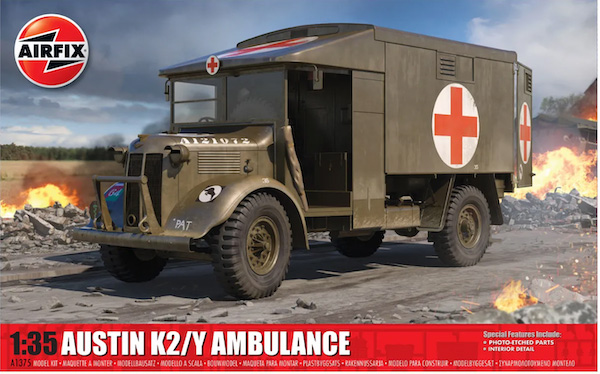
Full Review with Dave Coward
And just before we get started, here’s a quick look at how it all turned out…
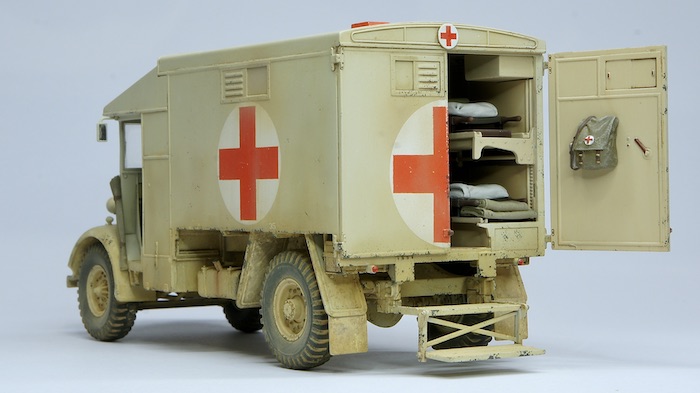
Background
Some of the most important military vehicles of the Second World War didn’t feature huge main guns, neither were they bedecked with ever thicker armour plating, but are no less fascinating to study. One of the most crucial abilities on any battlefield is to be able to transport your wounded troops quickly and efficiently from the front line, to field medical stations some distance behind the fighting, where they could receive the medical attention they needed and potentially save their lives. Although clearly any vehicle could be used for this task, a dedicated ambulance would often allow the wounded to start receiving care straight away and if you were ever in need of one’s services, you would no doubt class these as the most important vehicles on the battlefield.
One of the most famous vehicles of its type, the Austin K2/Y Ambulance was used extensively by British and Commonwealth forces throughout WWII, both in the combat zones of the world and on the home front. Built around the chassis of the Austin K30 light truck, the casualty compartment was developed in conjunction with the Royal Army Medical Corps and therefore proved to be highly functional. Able to carry either four stretcher cases or ten seated casualties, one of the main reasons why the K2/Y was so successful was because it was so rugged and reliable, requiring only a minimum of maintenance – an ambulance should always be ready when you need it.
The rear cabin was typically constructed of painted canvas on a timber frame, with the highly visible red cross on a white disk positioned prominently on all sides to hopefully ensure the vehicles occupants didn’t come under fire. Once the K2/Y had delivered its latest casualty load to the field station, it would invariably head straight back into the combat zone, at speeds on open roads approaching 50 mph.
An extremely popular vehicle with British, Commonwealth and American troops, the Austin K2/Y was viewed as something as an angel on the troops shoulders. Hopefully, they would never need to see the inside of the ambulance, but if they did ‘Katy’ would be ready and waiting for them. With over 13,000 examples built, these would have been a familiar sight on the battlefields of the world and it is thought that around fifty examples still survive to this day, some having undergone restoration back to something close to their original wartime configuration.
Now vehicles are not my usual thing but this model perked my interest due to seeing the movie ‘Ice Cold in Alex’.
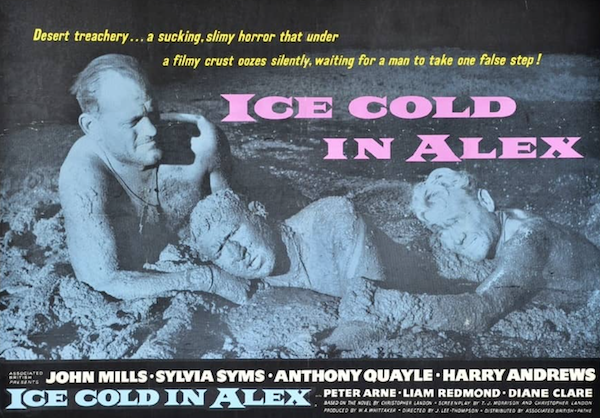
It’s a 1958 British war film set during the Western Desert campaign of World War II.
Captain Anson, the officer commanding a British RASC Motor Ambulance Company in Tobruk, is suffering from battle fatigue and alcoholism. With the city about to be besieged by the German Afrika Korps, Anson and most of his unit are ordered to evacuate to Alexandria. During the evacuation, Anson, MSM Tom Pugh and two nurses, Sister Diana Murdoch and Sister Denise Norton, become separated from the others in an Austin K2/Y ambulance nicknamed “Katy”. The quartet decide to drive across the desert back to British lines.
As they depart, they come across an Afrikaner South African officer, Captain van der Poel who persuades Anson to let him join their drive to the safety of the British lines in Alexandria.
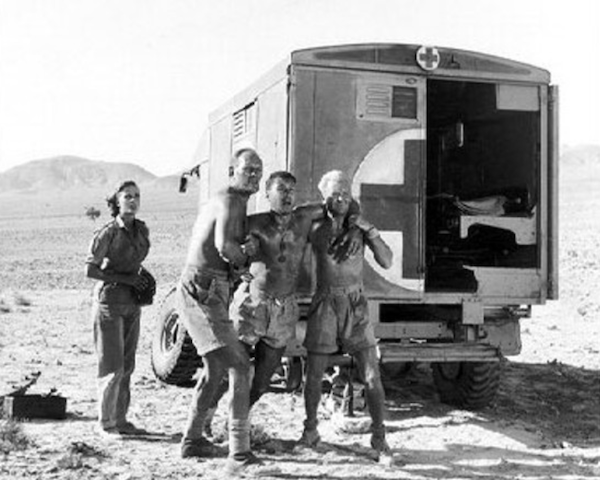
En route, the group meets with various obstacles, including a minefield, a broken suspension spring (during its replacement, van der Poel’s great strength saves the group when he supports “Katy” on his back when the jack collapses), and the dangerous terrain of the Qattara Depression.
Twice the group encounters motorised elements of the advancing Afrika Korps; in one encounter they are fired upon, and Norton is fatally wounded.
During the final leg of the journey, Katy must be hand-cranked in reverse up a sand dune escarpment, and Van der Poel’s strength is again crucial to achieving this.
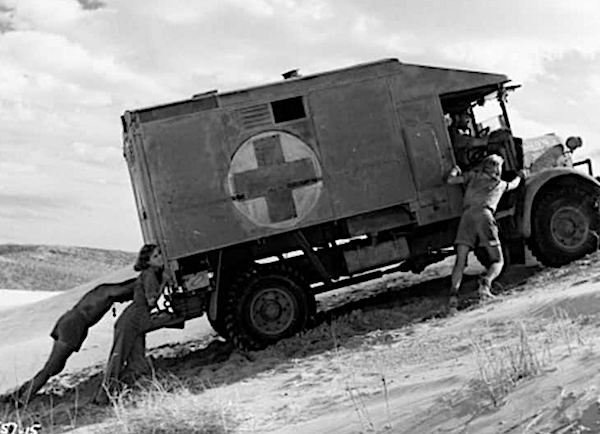
Continuing their drive, the party discuss their conviction that “Van der Poel” is a spy, and decide that they do not want to see him shot. When they reach Alexandria, Anson reports that “Van der Poel” is a regular German soldier that they met lost in the desert and has surrendered to them. Anson secures the MP’s agreement to allow the party to enjoy a beer with their “captive” before taking him into custody as a prisoner of war.
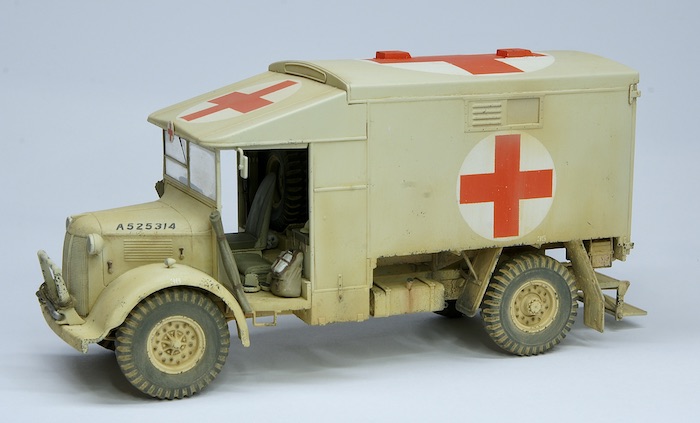
Aftermarket Extras:
Red Zebra Stowage set for the K2 Ambulance
The Spares box